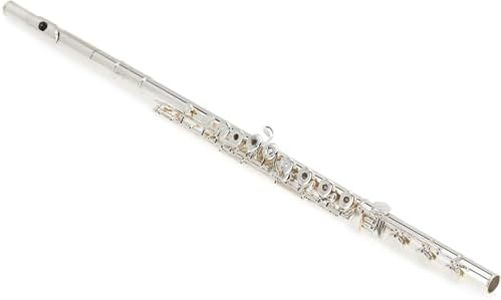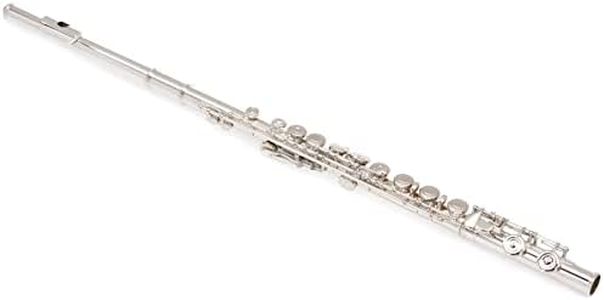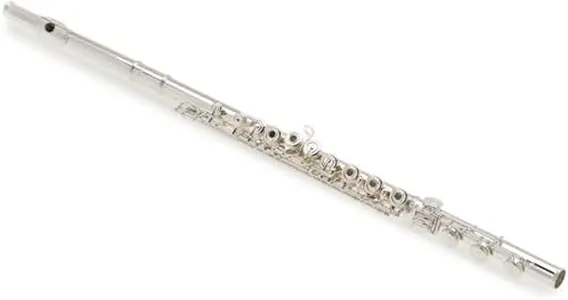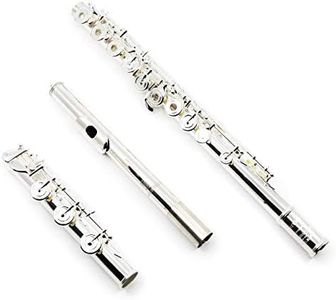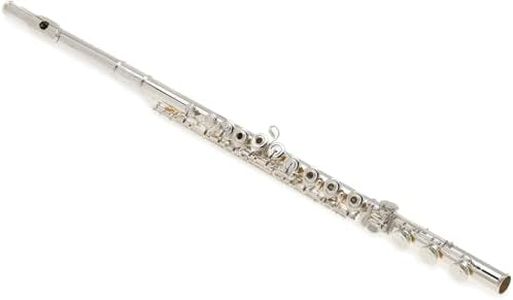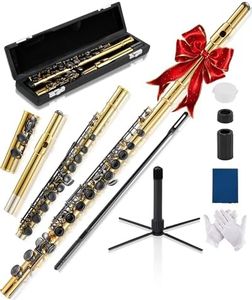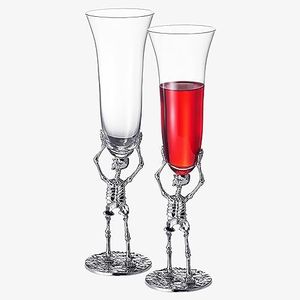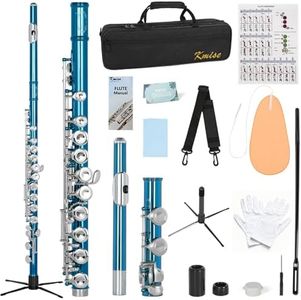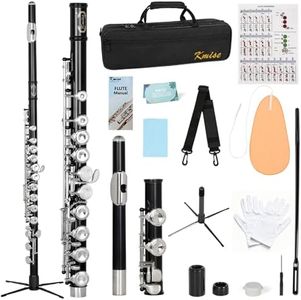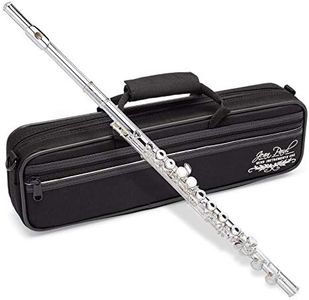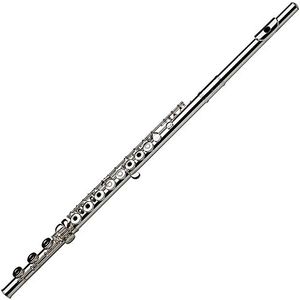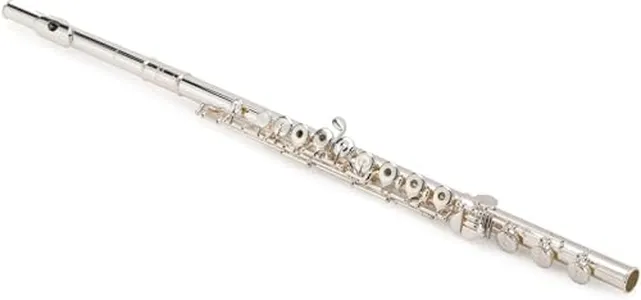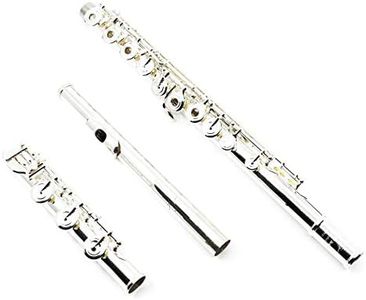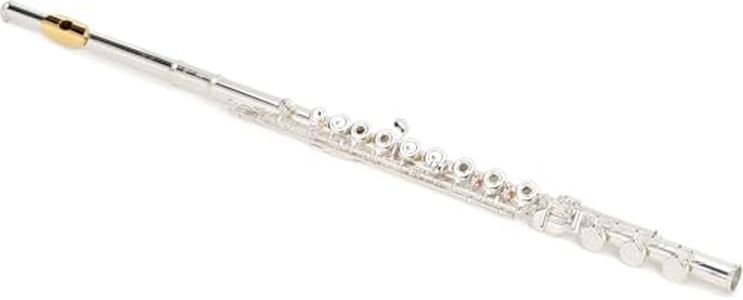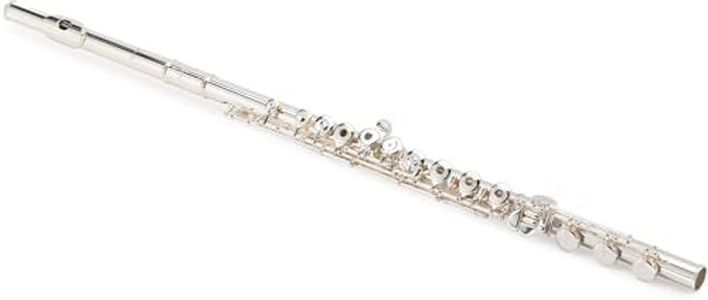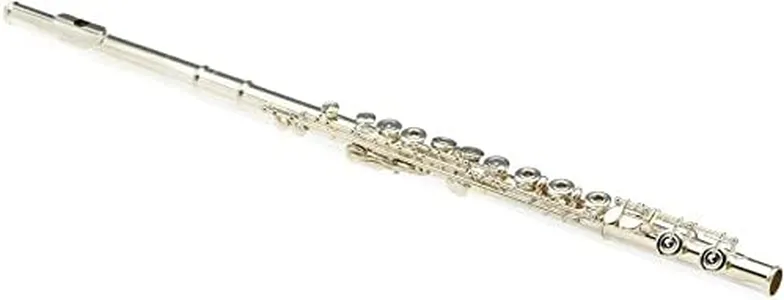10 Best Flutes 2025 in the United States
Our technology thoroughly searches through the online shopping world, reviewing hundreds of sites. We then process and analyze this information, updating in real-time to bring you the latest top-rated products. This way, you always get the best and most current options available.

Our Top Picks
Winner
Pearl 765RBE1RB Quantz Series Flute
Most important from
2 reviews
The Pearl 765RBE1RB Quantz Series flute is a metal instrument with a silver finish, offering a classic look and durability. It features a B-footjoint that extends the range of notes, a valuable addition for advancing players. The flute includes a split E mechanism designed to help produce clearer, easier high E notes, making it more comfortable for beginners or intermediate players working on technique.
It comes with a French style case, providing decent protection for travel or storage. The product is made in Taiwan, reflecting reliable manufacturing standards, and weighs about 4 pounds, which is manageable for most players.
This model suits students moving beyond entry-level instruments who want a dependable flute with helpful features like the split E mechanism and extended footjoint. Players seeking specific key mechanism configurations should confirm those details before purchasing.
Most important from
2 reviews
Yamaha YFL-222 Intermediate Flute for Student (International Version)
The Yamaha YFL-222 Intermediate Flute is a solid choice for students and beginner musicians looking to advance their skills. Made from nickel silver, it offers a sturdy and reliable build, which is essential for durability as you practice. The silver-plated keys provide a smooth playing experience, enhancing comfort while you learn. One notable feature is the Offset G key system, which can be more ergonomic for some players, making it easier to reach certain keys compared to an inline G setup. This is particularly helpful for younger or smaller players.
In terms of performance, this flute offers a good tone quality suitable for various musical styles, which can be beneficial as students explore different genres. However, there are a few drawbacks to consider. While the flute is designed for student use, more advanced players may find it lacking in some tonal richness and projection compared to higher-end models. Additionally, the flute's weight at 2.86 pounds, while not excessively heavy, might be cumbersome for younger players during extended practice sessions.
The Yamaha YFL-222 is not the most portable option given its dimensions, so it's best suited for home practice or lessons rather than frequent travel. For those committed to progressing in their flute playing, this instrument offers a nice balance of quality and affordability, making it a great stepping stone for aspiring musicians.
Yamaha YFL-462H Intermediate Flute
Most important from
3 reviews
The Yamaha YFL-462H is an intermediate-level flute designed with a sterling silver body, which gives it a warm, rich tone that many advancing players appreciate. It features an offset G key system, which is generally easier for players with smaller hands or those who find the inline G positioning less comfortable. The silver-plated keys offer a smooth, responsive feel, important for developing good finger technique.
Yamaha’s reputation suggests the headjoint likely supports good control and projection, key for progressing players. The inclusion of a footjoint improves the flute's range, allowing players to reach lower notes easily. The flute comes with a carrying bag, making it practical for students who need to transport it safely. It weighs about 3.5 pounds, which might feel a bit heavy during long practice sessions compared to models with less silver.
This flute represents a strong choice for intermediate players aiming to improve their tone and technique without stepping into professional-level pricing.
